#like if pippin is the only character in the fellowship played by a woman it's gonna be really funny when gandalf just absolutely hates him
Explore tagged Tumblr posts
Text
i saw the lotr musical on wednesday with my brothers!! i didn't know it even existed until like two weeks before we saw it (and didn't have any plans to see it until like two days before we saw it lol) but overall i had a good time!!
review under the cut bc i'm incapable of being concise :)
i knew beforehand that it was telling the whole trilogy in the one musical, so i was prepared somewhat for what the pace of the story would be, but for some reason i was still caught off guard whenever they skipped scenes and stuff - more so in the first act since it was less condensed than the second, and by the second act i was just along for the ride at that point yknow. i don't think it felt rushed necessarily, but my familiarity with the story made me take a second to get used to how they were telling it. i did laugh out loud in the first act when gandalf is captured by saruman and then the next time we see him he's completely fine and is just like 'oh yeah i escaped off stage don't even worry about it'
on the other hand, i think knowing the story beforehand probably helped me follow along with what was happening. my brother's girlfriend came with us and she hadn't seen the movies or read the books, and there were parts she was confused by - she didn't realise that when gollum got the ring at mount doom that he fell into the lava and died, she thought he got the ring and won lol. i will say that the ring getting destroyed was probably the moment that i felt the most let down by, and felt the most like it was rushed. it felt like it didn't have the emotional impact it should've had, unfortunately
i was also lowkey disappointed bc when boromir died i had a brief thought of 'omg they're gonna have the same actor who played boromir to play faramir that's gonna be sooooo cool' and after a second of thought i was like yeah there's no way faramir's gonna be in this lol. and lo and behold he was not. i understand they had to condense it like crazy but i was so sad they cut out faramir and eowyn and like half the shit merry and pippin did!! faramir and pippin are two of my favourite lotr characters 😔
ok but speaking of pippin, when i went he was played by natasha dumlao, which means that 3/4 of the main hobbits were asian!! i don't really have anything to add to that i just liked seeing asian people in lotr who weren't anonymous evil people from the east LMAO. but also seeing a filipino actor play my favourite hobbit felt very special to me personally 🥰
anyways!! my focus with lotr has usually mostly been on merry and pippin (and faramir) and like ofc i love sam and frodo but i think it took this musical for me to really latch onto their story. bc it cuts so much else out and makes them the main focus, i really like zeroed in on them for the first time, and was always itching for the story to cut back to them whenever the rest of the fellowship was on stage doing other plot stuff. rarmian newton and wern mak had incredible chemistry as frodo and sam!! i loved their interpretations of the characters and i wish i could see fan content of their versions!!!
anyways other miscellaneous stuff i liked:
i really liked the baylor/balrog/the thing that kills gandalf idk i haven't read the books and i can't remember what the movies called it. i thought it was a fun design :]
for some reason i liked that frodo had the same accent as the other hobbits?? idk accent names but i thought it was fun he wasn't talking in fancy british talk
i REALLY liked the costume design for the elves and the fact that they were colour coded according to which group they were lol
also really liked gimli's costume design and thought that conor morel's scottish accent was v good v pleasing to my ears
jeremi campese (merry!!). just love jeremi campese in general like i feel like i've seen him in 10 billion productions and he never misses but i especially loved seeing him play a cello that was the size of his body lol (also had no idea he could sing!! or play the cello for that matter)
stephanie caccamo (arwen) had the most beautiful fucking voice omg?? every time she sang it felt like i was ascending
SHELOB???
bro SHELOB????
NOW AND FOR ALWAYS!!! i've been listening to it on repeat for the past two days!!!! fuck!!!!!
the choreography in general but the choreography in the cat and the moon was so much fun!!
during the performance there was an INSANE fucking storm happening, so much so that my friends were talking about it the next day and my dad said he'd never seen a storm like it his whole life, and i didn't see any of it bc i was watching this fucking musical, BUT the thunder was so loud i legitimately thought it was just part of the play and was like 'wow really good sound design' until it kept going in parts that didn't make sense for there to be thunder and i realised it was just an actual storm outside jhgfdsfghjk
i'm adding this just bc my brother thought the opposite and it pissed me off but i like that it included the aftermath of the scouring of the shire at the end, i think it helped end the story on a really hopeful note and had a really good emotional impact to see life persevering!! and i don't think it was pointless at all, robert!!!
so yeah. after i saw it on wednesday i probably would have given it 3.5/5, i liked it well enough but still had some issues with it. but then. i just. couldn't stop fucking thinking abt it
(hence the playing of now and for always on repeat for the past two days)
the same exact thing happened with kingdom of the planet of the apes btw, i saw it and was like 'that was fine i guess :)' and then COULD NOT stop thinking about it, then saw it in cinemas six more times :/
so. hehe. i um. you know. on friday night, a whole two (2) days after seeing the musical, i, at one in the morning, impulsively bought a ticket to see it again (i guess i'm not trying to save money??) and i'm seeing it again on wednesday :) this time i'm gonna be in the stalls bc we were in the mezzanine and couldn't always see when the actors went into the crowd :(
but yeah sometimes something that you don't even think is like super mind blowing will just latch onto your brain. augh. i wanna rewatch the movies so bad but i'm waiting until after i watch the musical again
also no shade to hannah buckley i'm sure she's great as pippin but i really liked natasha dumlao and i hope she's playing him again when i see it this week! filipino pippin is actually something that can be so personal!!
i'm excited to see how/if my rating will change!!
#lotr#lotr musical#that was smth else i was thinking in act one#like if pippin is the only character in the fellowship played by a woman it's gonna be really funny when gandalf just absolutely hates him#but they cut out so much pippin stuff so huzzah we didn't have to see misogynist gandalf <3#but yeah tldr i had some issues (mostly w how insanely condensed it was) but overall i liked it :) and i'm seeing it again :)#waittt i forgot my one other criticism#now and for always was like the only song i actually liked jhgfsdfghj#(and the cat and the moon but that was mostly bc of the choreography)#but i did like the musical stylings of the show idk i thought all the songs flowed naturally within the world and the story and stuff#i mean aesthetically#like it didn't feel like Time For A Broadway Musical Song In A Musical Adaptation#it just felt like time for some lotr music in a lotr story :) yknow
14 notes
·
View notes
Text
I watched the 1991 soviet adaptation of the fellowship of the ring, also known as Khraniteli, which according to wikipedia was broadcast once on tv and then lost for thirty years to only resurface last year. which is a miracle. imagine if I never got to see this clip. (sound on for the experience). so thanks marit for letting me know this exists, if you're reading this!
it's in two parts and it's on youtube here and here.
this is actually a very faithful adaptation of the fellowship of the ring. it includes a bunch of stuff the jackson movies cut out, like the old forest, tom bombadil, and the barrow-wights. In exchange for this, it is the most dull movie I have ever watched. I don't have trouble focusing on movies but I was playing video games while watching this second half because I just couldn't bear it anymore. it was the longest hour of my life. the special effects are so awful I'm convinced that the budget of this movie was $10 and someone's cheap gold ring.
changes (that I actually noticed because I was paying attention at these rare moments) in this adaptation include:
frodo at the prancing pony, instead of having the ring slip onto his finger, danced with a lady and everyone stared at him and he got so embarrassed he put it on deliberately to escape. which is incredible.
we don't actually see gandalf die. which is a shame because I was so looking forward to the balrog. they run out of moria because there are orcs, there's a scene of aragorn pretending he's about to fall off of the bridge, then they run outside and they do a headcount and...... gandalf is gone. he "died defending us". I can't believe they robbed us of what a balrog would look like in this. Or maybe we did see him die and I'd stopped paying attention.
galadriel's temptation by the ring is so weak. like she takes the ring for a little bit, there's a flashforward (?) of her just sitting around and crying while holding it, and then she comes back like. I passed the test! WHERE'S "ALL SHALL LOVE ME AND DESPAIR". THAT'S THE HIGHLIGHT OF THE BOOK. anyways she's a "seer" in this and there's no celeborn.
aragorn has a huge scar across his face and also is I think the only character approaching this with enthusiasm. don't think him being a king comes up at all, but in fairness this is just solely a fellowship adaptation so it doesn't matter much.
I don't believe Legolas or Gimli speak at all. and I think Legolas is played by a woman? Not sure if that was a case of they switched Legolas's gender for #feminism or she just was a better legolas than everyone else. for the... two seconds legolas is on screen.
glorfindel still doesn't show up. he just CANNOT catch a break. has he actually been in any lotr adaptation or is he just too cool for movies.
they make the hobbits look small next to tom bombadil but I guess the technology they used to do that was too much or they realized it looked so bad so they didn't do this with any of the other characters, so it just looks like bombadil and goldberry are giants.
almost forgot. pippin is described as "AS STRONG AS AN OX" in this one and he's bigger than the other hobbits, which is funny. the subtitles keep calling him "pin" too. not sure if that's in the original or a translation thing.
some beautiful examples of the special effects in this:

gandalf's beautiful fireworks
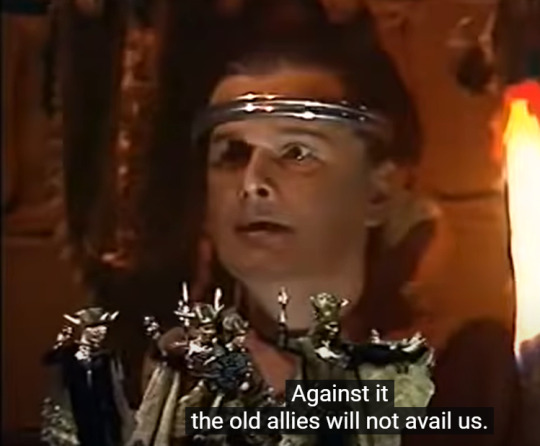
these guys are just dancing underneath saruman while he's speaking. and he looks like this.

excuse the youtube bar but man this whole scene was very incredible
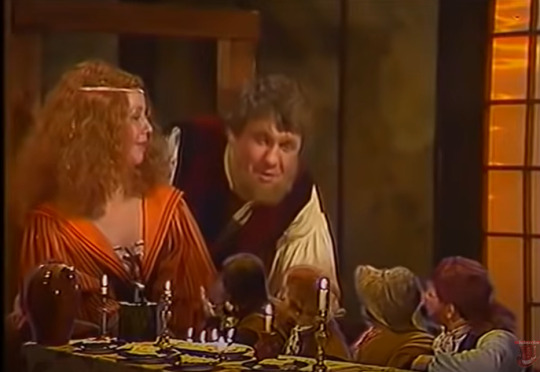
just look at how tiny they are!!
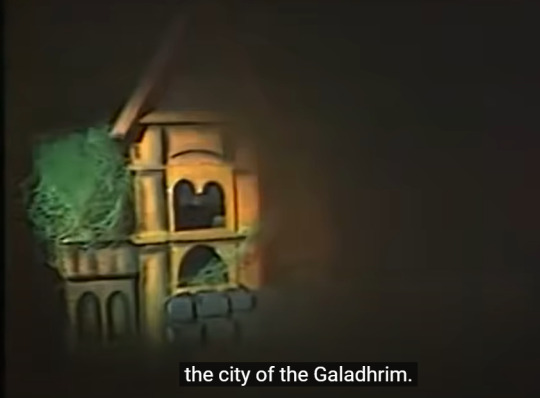
THIS IS CARAS GALADHON GUYS. DEFINITELY NOT SOMEONE'S OLD DOLLHOUSE.
there's more but I actually don't want to go back and rewatch any of this. it was that boring.
I was going to put this on the list I have of the other adaptations but I genuinely can't figure out how to rank it, because it was pretty faithful to the book in terms of the sequence of events, arguably even more so than the jackson films, but it was so incredibly boring and poorly made that I couldn't bear to even put it above the shadow of mordor video games, because at least those entertained me? so I'll leave it out for now. I'll decide what to deal with it later when the wounds are not so fresh in my heart.
29 notes
·
View notes
Text
type: oneshot
title: Measuring Tape
fandom: the lord of the rings;
characters: eurydice (oc); aragorn; frodo; sam;
pairings: honestly none, unless you consider this aragorn/oc but platonic? if you consider respecting and defendig women as an act of love.

a/n: I took this idea from a meme and smashed it into this because of how well I visualized Aragorn's expression. also, I decided to have a little fun and add some characters from Midsommer Murders for plot reasons but also just because. have fun.
.
Eurydice distributed the masks she had left between Aragorn, Frodo and Sam before they left the cottage.
She decided not to bring Merry and Pippin (just in case), and trusted the rest of the fellowship to take care of them. Even if they had only arrived to this universe a few days before, they already learned how to manage the house properply enough to survive.
The walk to the town's market wasn't long, yet because the masks were too big for the two hobbits they had to reajust them several times. Euridice noticed it, and before they entered the market, she gave the elastics of both masks a knot so it would stop falling.
"Now," she said, after greeting a person selling flowers, "do you have the list, Sam?"
"Here it is" the hobbit gave her the little yellow post-it.
"Right," she read throught the many requested items, "We can start with the food here and then we pass the pound shop for some supplies..." she looked for the basket they brought "Wait, where did I-"
Aragorn immediatly extended the basket to her, and she thanked him. The dunedain and both hobbits followed the woman through the stalls, glad to finally see something a little similar to their world - people selling food on stalls in what seemed like an aesthetic chaos.
Eurydice let Sam help her with choosing the fresh food, since he had showed great talent for cooking the other night, and was glad. The hobbit was very quick to pick the best food, being fruit, vegetables, fish or meat, which impressed not only her but the sellers as well. She found herself smiling at the bashful Sam fidgeting with his little coat as an energetic old woman seller complimented him for it. While they developed an entertaining conversation, Eurydice would explain things that Frodo and Aragorn would ask.
Soon they had all the food on the list, along with extra spices and herbs the nice energetic old woman gave them for free. Aragorn ended up carrying the basket full of fresh meat and fish, while Eurydice carried bags with fruit, and Sam and Frodo carried vegatables, Frodo with the little post-it in his hands.
The four of them entered a nearby shop that seemed small but was biggger on the inside. Eurydice led them through the many aisles and since they took less time than she expected on the market, she took time to explain them the things they found curious.
"What are these?" Frodo picked a pair of headphones.
"Those are to listen to music" Eurydice told him, "Here..."
She put them on the intimidated hobbit's ears with a smile that comforted him, and took her phone from the pocket of her coat. Frodo adjusted the headphones a little as Aragorn and Sam watched the scene before them carefully.
"You can connect it to a device that has music on it," Eurydice explained has she opened the music app, after connecting the headphones with the phone, "and enjoy."
She pressed play and observed Frodo, waiting for his reaction for when "rises the moon" by Liana Flores start to play. His eyebrows shoot up at first, but soon an impressed smile grows in his face, behind the cloth mask, and the halfling closed his eyes in appreciation.
"It's very soothing!" said Frodo, probably a little louder than he thought.
"Yes!" Eurydice chuckled, "Indeed, it's specially good to get away and calm down after a rough time."
At those words, Frodo opened his eyes.
"Can we take these?" he asked softly, "If they're not too expensive, of course."
Eurydice didn't noticed she was smiling althought she didn't care if she was. The little hobbit in front of her was quite happy with the music, and that made her happy, specially after the wizard, Gandalf, told her what his mission was. If the adorable sight of Frodo with a great pair of headphones in his small head wouldn't make her buy it, the soft pleading in his eyes would.
"Of course, Frodo" she spoke fondly, petting his head in affectionately, earning his chuckle along with Aragorn's smile.
Eurydice put on a soft playlist for Frodo so he could continue listening to music as he followed the others throught the aisles.
"Miss?" called Sam.
"As much as I appreciate it, Sam" the woman turned to him, "there's no need to call me Miss. Eurydice is just fine."
"Sorry," the hobbit blushed a little, "Eure-Eu-Eudi-"
"Eurydice" she chuckled.
"What is this for?" Sam asked
The little hobbit extended a roll of transparent tape to her.
"Ah, you found it first," she said, taking the tape, "I was looking for this. It's meant to sort of stick things together, although only light things..."
Eu took the a piece of paper with the pricetag and, to Sam's and Aragorn's surprise, cut a bit of the tape, and used it to glue the price tag to the respective object.
"... like paper."
Aragorn raised his eyebrows nodding, impressed, while Sam's mouth formed a perfect O (although his mask hided it), both thinking of the possibilities of situations where the tape could be useful.
Eurydice looked around searching for the last item on the list. Aragorn immitated her gesture, observing the many objects surrounding him. He took a random one, and turned around to ask Eurydice about it, yet she answered him before he even spoke.
"That is a measuring tape" she explained, "if you pull that edge there, there's a long tape with measures."
Aragorn did as she said and observed the many numbers along the strong, weirdly firm yellow tape. He decided to mark two meters.
"Careful not to cut yourself with it" said Eurydice.
She turned around, only to quickly turn back to Aragorn, earning a confused look from both him and Sam.
"Keep quiet," she instructed them, "and pretend to have a conversation with me."
"What's the matter?" the dunedain asked.
"It's Dennis Rainbird," Eurydice told them, "I do my best to be nice with him but I'm afraid he has no concept of privacy, nor personal space."
"Oh, I know some hobbits like that, alright" Sam's expression became angry, "Eavesdropping behind every door, spying through every window..."
"Yes, that's Dennis and his mother, Mrs. Rainbird" Eurydice whispered "no matter how polite I am, I can never escape his questions and commentary, nor his unconfortable touching..." she slowly looked over her shoulder, expecting to see the man, yet upon seeing no one, she looked back at the hobbits and dunedain, "no one can..."
Aragorn and Sam switched a look. Frodo was still gently and calmly moving his head at the sound of "Send Me a Peach" by The Blasting Company, until a loud voice made him jump, and his headphones fall to his neck.
"Aaah! Eurydice, my dear!" Dennis Rainbird appeared on the other end of the aisle Eurydice expected, "How are you, darling?"
"Ah, Dennis" was all Eurydice said.
Aragorn looked between her uncomfortable and desperate eyes and the slim man's disgusting smile. He wasn't sure what bothered him more, the fact that he didn't see his sly smile because of the mask, or the fact that said mask was slipping his nose and he didn't seem to care.
"I've been looking for you everywhere!" Dennis opened his arms in what would have been a welcoming gesture, as he walked in their direction, "Mommy and I are dying to have you over! It has been a while since we all had tea together."
"Well yes, indeed it has been a while," Eurydice said politely, as she discreetly gathered the two hobbits closer to her, "although, I'm afraid-"
"The week you moved back to Badger's Drift, of course, " Dennis had a hand posed on his chin in a thoughfull-looking way, "that was the last time we had tea, I believe! We really should meet more often..."
Something in the way he spoke made Samwise shiver and Frodo take a step back. Aragorn, however, remained in the same place, glaring at him.
"After all, we're finally free to have friendly meetings, right?" Dennis said, knowingly.
Eurydice swallowed. She knew he was referring to the afternoon when nine people fell on her cottage's garden from another universe - althought she couldn't explain that to Dennis Rainbird, from all people. It was obvious his mother saw all the movement in her kitchen (something admittedly very suspicious during quarantine) from her watching post, and sent her son to investigate.
Aragorn understood what the man was referring to as well, even if he didn't know his background.
"So," since Eurydice seemed to be out of words, Dennis continued to talk, getting closer and closer to them, "what about today? 5 o'clock?"
Yet, what made the dunedain almost shiver like Sam was the fact that he didn't know his intentions. Eurydice knew - she knew having tea at the Rainbirds meant trouble, sometimes blackmail, other times pure manipulation and humiliation.
Frodo looked at her, questions in his eyes, and the woman spoke.
"I'm terribly sorry, Dennis," she said clearly, "but I already have plans for today. Besides, I'm all over the place, and I don't want to make your mother vulnerable to the virus."
Aragorn glanced from Eurydice to Dennis, who kept getting closer. Frodo took another step back.
"Now, now, I'm sure my mother would be alright with that, don't worry," the man waved her off, "and I know you're used to have company anyway."
Dennis giggled in a way that made Aragorn's stomach twist.
"Oh, but my manners," his smile grew, "your friends are more than welcome to drop by as well" he chuckled, "We don't bite.."
"Sorry, Dennis, but I simply can't-"
"Or we could rearrange the party" he tilted his head, "Nothing a phone call couldn't solve."
Eurydice swallowed. She already tried to postpone the unavoidable but if they called the authorities like he was threatening, they would all be in trouble. Even if she got along so well with Cully, her father, Dectective-Inspector Barnaby couldn't close his eye to all those people in her cottage. It was at times like these she disliked to live in a village.
Eurydice sighed in defeat and Dennis smiled brighter, seeing that he had finally caught his favourite fly.
"So," he took another step, "5 o'clock the-"
As soon as Aragorn's eyes saw his movement, he pointed the measuring tape (still marked and blocked at 2 meters) to Dennis Rainbird as if it was a sword, much to the man's outrage and the others' surprise.
"The lady has already refused" were the only words the dunedain spoke, his expression clear.
Dennis casted him a slight look of scorn. He proceeded to repeat his action, only for Aragorn to pull the edge of the measuring tape once more and step forward, making Dennis walk behind until they were 2 meter appart.
"Last time I heard, we were in the middle of a pandemic" Aragorn told him, "2 meters should be enough for social distance."
"And yet you're not standing 2 meters between each other" was Dennis remark.
Eurydice observed Aragorn tilting his head.
"We're her company" this time it was Sam who spoke, stepping beside Aragorn, a new courage in him, "I'm sure that shouldn't be a problem."
The annoyance in Dennis Rainbird's face grew visibly as he looked between Eurydice and Frodo's shocked expression and Aragorn and Sam's angry one.
Aragorn poked him with the measuring tape, yet he didn't move, so the dunedain raised is eyebrows. In a swift movement, the side edges of the yellow tape made a small cut on Dennis arm, who gasped as he covered it with his hand. He looked at Aragorn in outrage, but the other's expression remainded the same, waiting for him to leave. And so, with a small growl, he did.
Eurydice stayed quiet for a moment, as Aragorn turned to her, unblocking the measuring tape so it came back to 0, with a very calm face. After a while, she blinked her eyes a few times processing what happened.
"We're gonna have to take the measuring tape and disinfect it" she said simply, taking the object Aragorn extended her.
Frodo and Sam exchanged looks, and soon followed the other two searching for the last item of the post-it list.
.
I edited this just to correct a few things, mainly typos, but now i am considering making this a small series because thinking of scenarios like these with the lotr characters is so entertaining, and the set of Midsommer Murders is simply perfect for the ambience haha.
most recently I edited this to change the name Lydia to Eurydice, because I like it better and I'm very very very slowly working on the au featuring Midsommer Murders vibes.
14 notes
·
View notes
Text
Plotting Method #5: The Hero’s Journey
Uuuugh I’ve put off doing a write about about this one because it’s long and I’m lazy. But one of my new year’s resolutions is to quit being such a lazy ass, so here I am. Lucky you.
Okay, THE HERO’S JOURNEY. Hero myths can be found in mythology in virtually every culture, throughout human history.Many, many many many, of these hero tales follow similar structures and deal with similar themes; so much so that Joseph Campbell eventually described the hero myth pattern in his 1949 work “The Hero with a Thousand Faces”, outline the steps that are so often seen repeated in the Hero’s Journey across time and cultures.
Of course, The Hero’s Journey isn’t some universal standard for hero myths, and there are many myths that don’t follow the pattern at all, or that only encompass a few of the “steps”, or incorporate the steps in different orders. It is just that Campbell and other historians and anthropologists noticed broad degrees of similarity in themes and narrative structure that often crop up in epic tales involving heros and the supernatural.
Similar plot structures are very popular in certain genres of fiction: modern myth (obviously; though inverting the structure and themes is just as popular as following them); epic fantasy; sword-and-sorcery fantasy; some high fantasy; space operas (Star Wars is a classic example); and epic sci-fi. It also pops up in quite a bit of classic literature. Think “Great Expectations” by Charles Dickens, or “Jane Eyre” by Charlotte Brontë, which involve characters suffering in a way that inspires goals and motivation, eventually going off on wild journeys where they face temptations that they must resist in order to achieve those goals; facing the “Dark Night of the Soul” where all seems lost; and finally achieving those goals and completing the hero cycle.
No quick rundown today, I’ll be jumping right into a detailed overview since there is so much to cover. You’ll notice many parallels to the Freytag pyramid, as the subject of most Greek plays are hero myths, and to the 3 Act Structure, which is itself as adaption of Freytag’s pyramid. The Hero’s Journey, however, is the most complex and detailed of the narrative structures, with seventeen (!!) parts in Campbell’s version (less in other version of the same concept, but I’ll be basing this off Campbell’s work, and leave the option to scale back, rearrange, and cut down to you). So buckle up, it’s going to be a long ride.
The Hero’s Journey
ACT I: DEPARTURE Five major plot point are found in Act 1. They are as follows: The Call to Adventure: The hero begins in a state of everyday normalcy, but receives information that calls them into the unknown. The call itself can take a while to manifest. Frodo isn’t compelled to leave the shire until almost seventy pages into the “The Fellowship of the Rings”. Other times, it can happen fairly quickly. In “The Hobbit” (which is a children’s book, while The Lord of the Rings is not), Bilbo receives his call to adventure about ten pages in. On the other hand, in Beowulf, we receive a few lines about who Beowulf is, and then the story shifts almost immediately to the situation with Grendel and Hrothgar. We, the reader (listener originally, but few people are introduced to Beowulf orally these days) travel with Hrothgar to find Beowulf and to present him with the Call, rather than the narrative starting with our hero as is the custom with many Greek Myths. The Refusal of the Call: In many (not all) hero myths, once the hero has been presented with the call, the resist. They don’t want to abandon everything and go on some crazy adventure, they are content the way things are (Bilbo). Or, perhaps, they are too frightened (Frodo), or they feel obligated to remain where they are out of duty (Luke Skywalker). Again, these plot points aren’t set in stone. Beowulf does not refuse the call when Hrothgar begs him for assistance in defeating the monster Grendel. It does, however, add interesting characterization and depth to motivations when your hero is forced into a situation they don’t want to be in. How a character deals with a situation they’ve been thrust into against their will will speak volumes on its own. Meeting the Mentor: Once the hero is embroiled in the quest, by choice or against their will, the wise, often magical, mentor will appear to help guide the hero along the way. The mentor will often give the hero tools or talismans that will aid them on their quest. This step is where you find the most variation in the ordering of these plot points. In Sailor Moon, Luna’s appearance combines “Meeting the Mentor” and “Call to Adventure” into one event. As does The Hobbit with Gandalf. In The Lord of the Rings, you could make a strong argument that Lady Galadriel serves as the Mentor if you look at the trilogy as a whole, giving the hobbits sage advice, firming their resolve to pursue the quest, and providing them with magical gifts that save their lives on more than one occasion. And she doesn’t appear until the very end of Fellowship, after Gandalf (unquestionably the Mentor in The Hobbit) has been lost. In Star Wars, Luke meets Obi Wan and receives with “magic talisman” (his lightsaber) after his Call to Adventure, but before his Refusal of the Call. The order laid out by Campbells is more often followed in classic Greek myths than in modern version of the hero’s journey, wherein the hero, such as Perseus, have already accepted and set out on their quests before their Mentor, often gods such as Hermes and Athena in the Perseus myth, makes an appearance and provide their magical gifts. Crossing the First Threshold: The hero finally leaves the world he knew before completely and utterly. He has officially left his old life behind in pursuit of his quest and, this is important, stepped into the unknown. For Frodo, Sam, Merry, and Pippin, this is when they leave Bree with Stryder (Aragorn). They’ve well and truly left the world of Hobbits behind, from that point on, no one they encounter has ever even heard of hobbits before. From that point on, the dangers they face become much more serious. Oh sure, the Black Riders pursued them in the Old Forest, but at Weathertop, their attack leaves Frodo mortally wounded. When they make it to Rivendell, it is a place of the utmost difference to the sleepy little world of the Shire they left behind. For Luke Skywalker, he gets into a spaceship and leaves his actual, physical world behind. You can’t get much more literal than that. The hero has left, the dangers are more serious than ever before, and usually, going back isn’t an option. Belly of the Whale: And this is the moment, right after Crossing the First Threshold, where things usually go tits up for the first time. If Crossing the Threshold for Frodo is leaving Bree, the Belly of the Whale is getting stabbed on Weathertop by the Nazgûl. This is the hero’s first test, their first trial. Instead of leaving their old life behind with their held held high and full of pluck, they are immediately knocked down. This is when their commitment to their quest is seriously tested for the first time, and they are forced to show their willingness to transform, change, and overcome their own weaknesses to pursue their goals. They are metaphorically “killed” by this challenge; but are reborn when they get back up, more determined to complete their quest. It is right around this point that the hero begins collecting allies (see: Han Solo and Chewbacca).
ACT II: INITIATION Act 2 has six parts. There are as follows: The Road of Trials: Of course, the hero isn’t done facing trials yet. And the Belly of the Whale is only a trial of conviction. For the rest the hero will face, they will have to be an active agent. The hero needs to change, but in order to begin their transformation from Zero to Hero (see: my second favorite song in Disney’s Hercules), they need to face a series of trials that puts them to the test, physically and emotionally. More often than not, these come in threes, and they fail one or all of them. During these trials, the hero continues collecting allies (see: Princess Leia). This takes up most of the story. Now, this is where things get weird/confusing depending on what version of the Hero’s Journey you are looking at. Campbell’s version continues on with Meeting with the Goddess, which is like reiteration of the Mentor: a wise, powerful, often female character appears, bearing more gifts to help the hero on their way. If you look at “The Fellowship of the Ring” on it’s own (rather than as part of a whole with the next two books), this would be the meeting with Galadriel. Next, for Campbell, comes Woman as Temptress, in which a character, often female in true myths, uses lust to try to sway the hero from his quest. See Circe, who keeps Odysseus and his men on her island for years, and later, in a similar vein, the Lotus Eaters who do the same. In modern hero’s journey stories, the same idea of temptation to abandon the quest frequently appears, though at what point in the narrative varies greatly. For Frodo, it’s when he arrives as Rivendell, and the burden of the Ring is technically off his shoulders. For poor Sailor Moon, it’s literally every single time a monster appear and she just wants to abandon her duty and go back to a normal, peaceful life as a carefree teenager. For Luke, he’s briefly tempted by the power of the darkside Campbell follows with Atonement of the Father/the Abyss, which is the moment the hero must confront the thing which holds the most control or power over his life at the moment (usually facing the conflict). They must face it head on (though usually in a metaphorical way, as a lead up to preparing to confront it physically in the climax). This moment is famously represented when Luke literally gains atonement for his father and the antagonist, Darth Vader/Anakin Skywalker, calling him back from the darkside. Next comes Apotheosis, the moment the hero reaches a state of clarity. The ultimate challenge is coming up, and the hero knows what they must do. They have a greater understanding of the situation and of themselves. They have been made wiser by their experiences, and now, finally, they know how to use that wisdom to their advantage. This is the moment after the beloved sidekick dies tragically in the main characters arms, when the main character lies their friend gently on the ground and then rises to their feet, steely eyes with fists clenched after shedding a single tear, and you know some serious ass is about to be kicked. See pretty much any episode of Dragon Ball Z. And now we finally have our Ultimate Boon! This is the achievement of the quest, usually in the form of a success after a dramatic climax. The antagonist is overcome, the macguffin is claimed, the throne is won, the Death Star is destroyed, the Ring is cast into the fires of Mt. Doom. And here’s the most important part of all of this, every step listed above: every single step is vital in preparing the hero for this moment. Without the challenges, successes, and failures that the hero faced before, they would not be ready or able to achieve their goal. They have learned something, gained something, or released something in every step that has shaped them into what they are by the end of their quest and made them capable of seeing it through to the end.
Now, here’s the dealio. Campbell’s “Temptress, Atonement, Apotheosis, Boon” stages are classic, but really focused on actual real mythologic heroic epics. They are based off common themes in stories that are thousands of years old, from cultures whose value and views don’t always aligned with contemporary ones. And most modern epics tend to stray pretty far from these steps, as they just don’t quite apply so neatly in our modern narratives. So if “Atonement of the Father” just doesn’t make sense in the context of your story, dont’ worry about it, here are the modern equivalents, listed by Christopher Vogler in 2007:
Tests, Allies, and Enemies: The equivalent of “The Road of Trials”. The same thing, essentially. The hero gains new allies, meets their enemies for the first time face to face, and must face a series of tests which they usually fail to “forge them in the heat of battle”, if you will. Approach to the Innermost Cave: The Hero must approach and enter the place of danger. Luke, Han, Chewbacca, and Obi Wan must sneak into the Death Star to rescue Leia. Sam and Frodo must make their way into the heart of Mordor with Golem’s aid. Sailor Moon and the Sailor Scouts must face Queen Beryl in her own lair. Beowulf descends in the lair of Grendel’s mother. And this is the key: the hero isn’t playing on their own home turf. The antagonist has the upperhand, this is their realm. The Ordeal: Usually the climax. The Hero must face a final, and ultimate test. They must rely on the skills and knowledge they have gained through the rest of their journey to see them through, and to achieve their quest. This is the struggle itself, Frodo being overcome by the ring on the edge of Mt. Doom; the actual process of rescuing Leia and the challenges they face in doing so; The Battle of the Five Armies. Reward/Seizing the Sword: Now we come back around to “The Ultimate Boon”. This is the hero’s moment of success. Luke, Chewy, and Han flee with Leia. The ring is cast into the mountain and Sauron is toppled. The Sorcerer’s stone is saved, Garfield gets his lasagna. The goal of the quest is achieved.
Back to Campbell’s version. Now comes: ACT III: THE RETURN The third and final act has six parts. There are as follows: The Refusal of the Return: The Hero is enlightened. He has found success, even fame. He’s a big fish now, and his old life, his old world, seems like a very small pond. Sometimes, the hero will not want to return to the way things were, and to bring his wisdom back to those he left behind. You see this most often in YA contemporary urban fantasy, in which a teenage girl is swept up in a world of magic and adventure, and, when given the option to return to her old ordinary, non-magical life at the end, she refuses, unwilling to go back. This does not always manifest. The Magic Flight: Sometimes, the moment the prize is won is a moment of extreme danger. Sometimes the hero must flee immediately, lest they be killed by an antagonist who has not been defeated. Perseus beheads Medusa, but he quite literally take a magic flight away with his boon (Medusa’s head) using the winged shoes given to him by Hermes as Medusa’s gorgon sisters come after him. Again, this scene is not present in every hero’s journey. Rescue from Without: Sometimes, the hero is in such a state that they cannot return to their old world on their own. Outside help need to come to their aid, to get them back to the world they knew. Return of the King is a great example of this. Frodo and Sam lay, exhausted and dying, on a rock surrounded by lava flow after destroying the ring. They need to be rescued by the eagles to return to a state of safety. The Crossing of the Return Threshold: But no matter how they do it, unwillingly, in a madcap flight, or with outside help, the hero must return from the world of adventure, to the everyday world. They don’t necessarily need to return to their original starting point, but they need to step out of the state of “quest”. The most important point here is that when they return, they return with all the knowledge and wisdom they have gained on their journey. At this point, they should be qualified to be the Mentor in the quest of the next generation. They should be able to become a part of ordinary life again, and maybe share their wisdom with others. The Master of Two Worlds: This is the hero actually doing just that. They have seen so much, done so much. They have lived in an ordinary, mundane world, and they have lived in one full of magic and adventure and danger. Ideally, by the end of their journey, they feel comfortable and confident in both. A young hero returns to a village where he was once an outcast, but now feels no reason to fear his old bullies as he had grown stronger and wiser. Bilbo Baggins returns to the Shire laden with treasure and bitten by the adventure bug, but lives quite comfortably in his hobbit hole writing his book in between the travels he makes. This isn’t just in reference to their physical state, thought. The hero also strikes a balance between the inner world, and the outer world. The material world, and the spiritual one. The hero is at peace with themself, is confident in themself and their abilities and knowledge. They are no longer plagued by fear, self doubt, uncertainty, even the fear of death, which they have faced and conquered. They are in control of their physical world, and their inner one. Freedom to Live: The hero has faced death. They have lost those close to them. They have nearly lost themselves. They have had to accept the fact that they may die, that they probably will die, and yet they have chosen to go forward anyways, to pursue their goals or die trying. They no longer fear death, and in that freedom of one of the most basic and deepest mortal fears, they have gained the freedom to truly live, unfettered by “what ifs”. They’ve already seen the worst, and it didn’t keep them down.
Vogler has a slightly different version of “The Return”, which includes only three steps: The Road Back: The hero starts his journey back home. Something usually stops him or prevents him--there is one more thing that must be done. The Resurrection: The hero is reborn in some way. They find the strength to make one final push, to believe in themself, to believe in the force, or the Schwartz, or whatever. Speaking of the Schwartz, this is the scene where Lone Starr gets his money and leaves Princess Vespa on Druidia, only to find out that he is actually a prince and can marry her after all, pulling the Winnebago around with his confidence regained for a zero-hour confession of love. The Return with the Elixir: The hero had achieves the goal of the quest and has the thing that was needed to save the day (or in the case of LotR, got rid of the thing). Luke returns after blowing up the Death Star with the knowledge that the rebels will continue fighting. Conan the Barbarian probably brought some magic sword back to his kingdom or something in one of his many movies that made him a stronger king. Bilbo returns with his 1/14th of the treasure. The quest is well and truly completed.
6 notes
·
View notes
Text
Epic Movie (Re)Watch #199 - The Lord of the Rings: The Two Towers
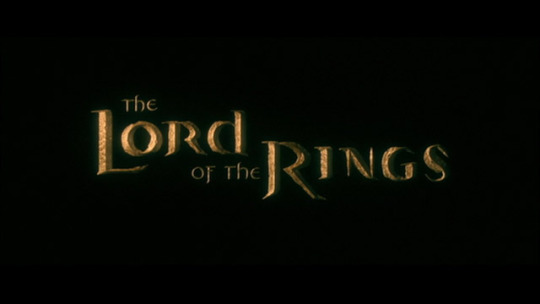
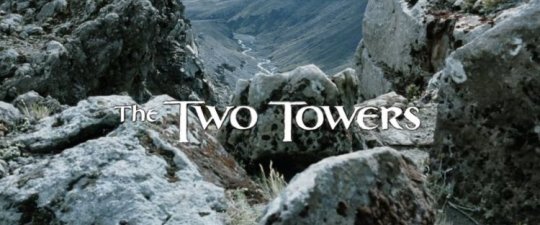
Spoilers Below
Have I seen it before: Yes
Did I like it then: Yes.
Do I remember it: Yes.
Did I see it in theaters: No.
Format: Blu-ray
1) According to IMDb:
New Line Cinema wanted Peter Jackson to start the film with a prologue done by Cate Blanchett, something that Jackson didn't want to do. Ironically, a year earlier, New Line Cinema had been opposed to opening the first film with a prologue narrated by Blanchett, something, of which, Jackson was in favor.
2) Beginning this film by revisiting such an iconic moment from the first (The Bridge of Khazad Dum) and continuing to push said moment past where it ended in Fellowship helps to make the film unique. It won’t just be a retread of familiar material but instead something which continues to push the story forward as all the best sequels do. It also sets the bar high for all ensuing action, as this was one of the (if not the) best moments from the original.
3) This film really doubles down on deepening the relationships introduced in Fellowship, with the romance kinship between Sam and Frodo. It is their relationship which the audience invests in, it’s something personal we can attach to. Sure Frodo losing his life or soul to the ring would be awful, but seeing how it effects Sam just ups the pain.
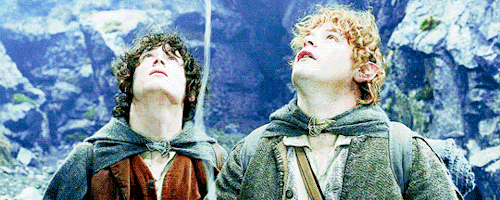
4) Andy Serkis as Gollum.
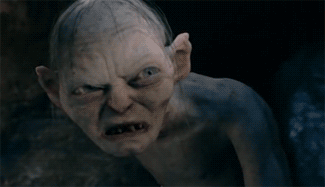
Holy shit, Andy Serkis as Gollum. Don’t let the fact that this is a CG role fool you, this is pretty much ALL Andy Serkis. Gollum’s facial features were based on his performance by the animator. All the physicality, all the vocals, the emotion, the heart, the character is Andy Serkis. He is so freaking otherworldly as the iconic character, blending completely into the role in a way only the best actors can. You don’t SEE Serkis in the part because he casts anything that is him aside to embrace the devious Gollum. And while I cannot possible undersell the importance and absolutely stellar work Serkis put into the part, a motion capture role is either limited or supported by the animators behind it. The character of Gollum is a perfect marriage between animation and performance, making you not doubt for one second that this is a real living character. Stealing pretty much every scene he’s in if not the entire film, Serkis should have been nominated for an Oscar because of his role in these films but wasn’t because it was motion capture. But this does not undermine the fact that Serkis by far gives the best performance in the entire trilogy.
5) The fact that the Fellowship was broken up in the last film allows for much more character development in this one. The heroes are not fitting for screen time or development in a scene with eight other characters. By separating them into the groups of Frodo and Sam; Aragorn, Legolas and Gimli; and Merry and Pippin, all the characters get more room to shine and be developed.
6) Karl Urban may not have a lot of room to shine but that doesn’t mean he’s not as good in this movie as he is in others. Urban is a wonderfully gifted character actor, able to blend into any role which comes his way and Éomer is no different. You don’t see Urban so much as you just see the character.
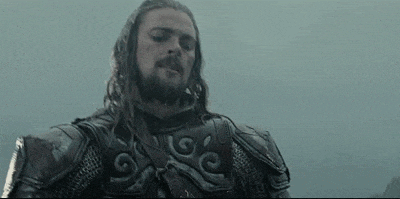
7) One of my favorite things in the entire trilogy really begins to take form in this film and that is the bromance between Legolas and Gimli.
Legolas [after Éomer threatens to cut off Gimli’s head, pointing an arrow at him]: “You would die before your stroke fell.”
8) There’s this wonderful scene in the movie where Aragorn and company are at the site of the orc fight (where Merry and Pippin last were). What makes it work is that we briefly got a glimpse of this moment earlier. The orcs began fighting attackers and it looked like Pippin was going to be crushed by a horse when it just cut away. But by flashing back to what really happened while Aragorn figures it out for himself does two things well. First of all, it follows the rule of show don’t tell. Secondly: it doesn’t waste the audience’s time by showing us what happened THEN having Aragorn realize it himself. By combining it the film’s pacing improves.
youtube
9) Treebeard.
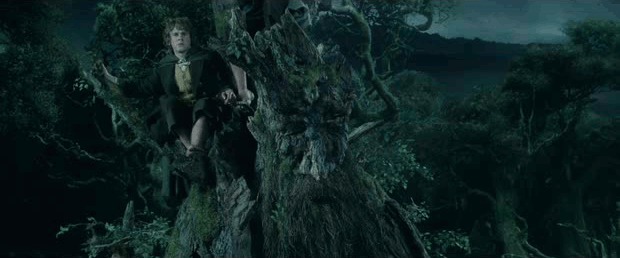
I really like Treebeard, he’s a wonderfully multifaceted character. He is able to be slow, paced, patient, but also has some deep anger sometimes. Voiced by John Rhys Davies (who also plays Gimli), the actor does a good job of making Treebeard sympathetic and interesting when (in lesser hands) he could’ve come off as boring. I dig it.
10) As with many parts of the trilogy, the Dead Marshes scene has a wonderful sense of place to it. It’s viscerally creepy and eerie, making your skin crawl and your stomach turn. Peter Jackson’s roots as a horror director really come in handy in these scene as it’s a place you know the characters should leave ASAP.
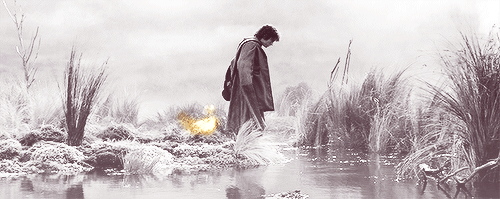
11) Can I just so: Gandalf is really freaking dramatic.
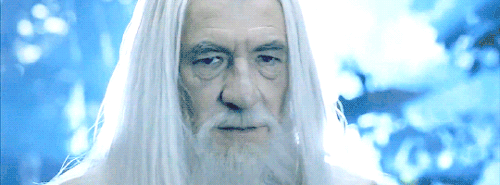
When he’s revealing to Aragorn, Gimli and Legolas that he’s been RESURRECTED (dramatic enough on its own) he even disguises his voice to make it sounds like he’s Saruman just to screw with them. And then we have this wonderful moment after Aragorn calls him Gandalf:
Gandalf: “Gandalf? Yes, that is what they used to call me.”
Dude! You did NOT forget your name! You remember literally EVERYTHING ELSE! You remember Aragorn and Merry and Pippin and everything. Take a chill pill, Gandalf.
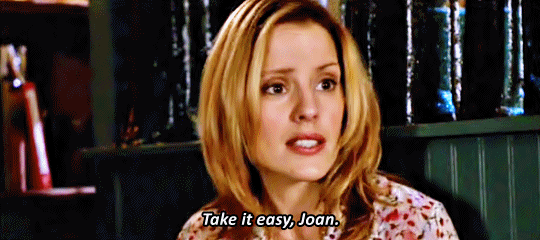
(GIF originally posted by @marshmallow-the-vampire-slayer)
12) I really like the whole Merry, Pippin and Treebeard subplot. It’s largely conversation but it brings up a lot of really interesting ideas about why the trees should participate in the war. Not only that, but it very organically develops Merry QUITE well. He and Pippin both started out as pretty immature in the first film, but by the end of this movie (through the subplot with Treebeard) he’s accepted his responsibility and is ready to fight for what’s right.
13) Miranda Otto as Éowyn.

Although Éowyn really gets her shining moment of glory in Return of the King (and the best damn moment in the entire trilogy), I love her from the first moment we meet her in this film. She’s my favorite character in the entire trilogy. I love that she can cry/grieve but still comes off as incredibly strong. She always has the best for her people and king in mind, always looking to fight against those who threaten those she loves and constantly frustrated when others try to get in her way. She is a great leader and a great fighter, as no moment fills me with such joy as seeing this badass royal practicing how to fight with a sword. I just…gah! I fucking love Éowyn.
14) This is one of those lines in a movie which has stuck with me my entire life.
Théoden: “No parent should have to bury their child.”
It really speaks to the grief Théoden is going through and an honest truth. Children are meant to outlive their parents, not the other way around. According to IMDb:
One time while Bernard Hill was in England, a woman came up to him and told him about how one of her children had died shortly before then, and that parents shouldn't have to bury their child. His confrontation with this woman affected him so much, that he asked to have a line put in about it.
15) Cutting between the three groups in the film could have easily dogged down the pacing, but the film knows when to make their cuts. The tension continues to build organically and the structure is never disrupted.
16) The conversations between Gollum and Sméagol.
youtube
Mostly I talk about how scenes like this work from a storytelling aspect as opposed to a technical aspect. And while these moments clearly illustrate the conflict and layers within Gollum/Sméagol, I am actually more impressed with the technical aspect of it. The scene works very well with two basic rules of filmmaking: Eye line and the 180 degree rule.
You can probably gleam what eye line means just from the name of it, but it’s making sure that when you cut between two characters looking at each other between shots the eyes match. Not only is that done very well here, but so is the 180 degree rule. The 180 degree rule is very simple: it means that when two character are in the same scene they should always be on the same side of the frame. Whether the shot is a wide, over the shoulder, or whatever, unless there is movement going on in the scene they should be on the same side of the frame so the continuity matches. In this scene, Gollum is always on the left while Sméagol is always on the right. Even though they’re the same physical person sitting in the same spot, the way the scene is framed just drives home the idea that they’re talking to each other because it follows the 180 degree rule. I just really dig that.
17) One of the most tragic things about Sméagol/Gollum is that for like MOST of this film he’s actually trying to redeem himself. He’s trying to be the good buy, he’s trying to help Frodo and Sam, but it is the harm done to him by fearful men which results in his regression back to a greedy backstabber. The more you sympathize with a villain, the more powerful they are.
18) I like the little update we get on Arwen and Aragorn’s relationship via flashback, but the later extended sequence with her, Elrond, and Galadriel is always something I zone out during. I like that she’s not forgotten but also the 15 minute segment where her arc is developed can feel a little pointless TO ME at times.
19) The Wild Riders attack.
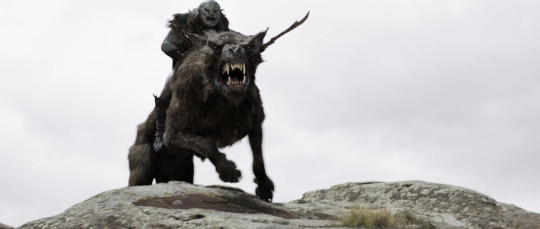
While a little long, the set piece is very well done. It has interesting, well choreographed action which takes advantage of the wide space its in and a wonderful sense of tension. And it has some very real consequences, with Aragorn not being the untouchable hero trope but instead taking a fall off a cliff and being presumed dead. Also, Legolas and Gimli have their first of many competitions of who can kill the most bad guys in it and I love that.
20) A film is a story told in cuts.
Wormtongue [after talking about how it’ll take tens of thousands to take Helm’s Deep]: “But my lord, there is no such force.”
[Saruman shows Wormtongue such a force.]
21) I get that Elrond is Arwen’s dad and he’s worried about her, but she’s an adult who is living her life. Can’t he just respect the choice she’s made to live for Aragorn instead of pressuring her out of it? Please?
22) David Wenham as Faramir.
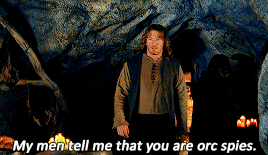
There’s a lot more patience with Faramir than his brother Boromir had. You can see a far amount of grief in Wenham’s performance. He’s wiser than his brother but not as favored (as we will get a better peek into in Return of the King), which causes a conflict in him. He wants to please his father and make him proud, but he also understands that his father is not always the best decision maker. This conflict shows greatly in Wenham and he’s able to make the character very interesting because of that.
Faramir: “A chance for Faramir, captain of Gondor, to show his quality.”
23) Get friends who react to you not being dead like Gimli and Legolas do with Aragorn.
Gimli: “I’m going to kill him! [Not 30 seconds later] Bless you!”
Legolas [after thinking Aragorn died]: “You look terrible.”
24) I know the source material dates back to 1954, but I HATE the, “get the women and children to safety,” trope. Like, Éowyn proves that women are capable of defending themselves just as well as men can. But they’re constantly infantilized, LITERALLY thought the equivalent of children, needing to be protected and hidden away from danger. If they trusted women to fight in the battle of Helm’s Deep there wouldn’t be all this talk about, “Oh, we don’t have enough men to fight for us.” THEN FIND SOME WOMEN WHO ARE GOOD WITH A SWORD! YOU’RE LITERALLY HAVING TEENAGERS FIGHT, YOU DON’T THINK YOU CAN FIND A WOMAN WHO IS AS SKILLED WITH A SWORD AS TEENAGERS!?
25) Aragorn really gets to go on a great journey throughout the three films. I mean in the first film he’s a loner, a ranger who doesn’t lead men. But in this film he begins to accept his responsibility as a king and lead the fight in the Battle of Helm’s Deep. It’ll only grow in the third film and I appreciate that.
26) One thing that these films do really well is they don’t let situations get too dire. This is a story largely about hope and fighting because of that hope, so to have a battle be too depressing goes against that idea. Legolas and Gimli are great of keeping the human heart of a scene.
youtube
Gimli: “What’s happening out there?”
Legolas: “Shall I describe it to you? Or would you like me to find you a box?”
[Gimli laughs.]
27) Battle of Helm’s Deep
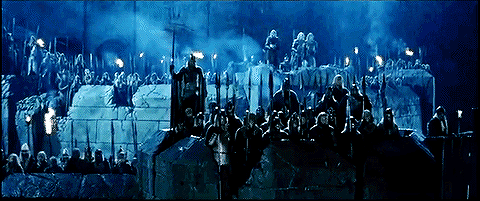
This is an absolutely incredible climax to the film in the truest sense of the word. While the battle is INCREDIBLY long the filmmakers do a great job of carrying the action and pacing so that it never loses your interest. Legolas and Gimil help with that, but so do the character choices. Théoden gives up, Aragorn is ready to fight. The battle has tides, it changes favor, and it really just does a great job of holding your interest the whole time.
28)
Théoden: “Is this it? Is this all you can conjure, Saruman?”
[Battle starts to get worse]
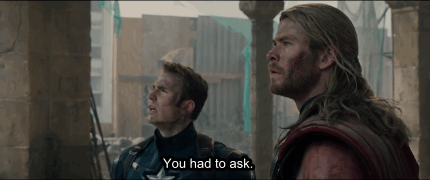
(GIF originally posted by @welcometoyouredoom)
29) I love this exchange.
Treebeard: “This is not our war.”
Merry: “But you’re part of this world!”
30) While this film does feature a tone of development for Merry, it is Pippin who knows what to do so Treebeard will get invested in the war. So he’ll fight. He’s a tricky one, that hobbit.
31)
Théoden: “What can men doe against such reckless hate?”
Honestly (and Aragorn’s actions prove this): unite. Stand up against hatred and bigotry together and show the world that you will not stand for it.
32) One thing I haven’t talked much about for this film which also plays a much larger factor in Return of the King is Frodo’s continued corruption. The ring is getting to him, it’s darkening him, tempting him, causing him to doubt and fear. Wood plays this VERY well, this development. It feels organic, it makes sense even if it is brought upon by an outward force. It just really works.
33) According to IMDb:
When Frodo (Elijah Wood) and Sam (Sean Astin) are in Osgiliath, Sam says, "By rights, we shouldn't even be here." This was a nod to the deviation the screenplay had taken from the book's storyline. In the book, Sam and Frodo never passed through Osgiliath.
34) I freaking love this. I forgot about this exchange and honestly it gives me hope.
youtube
35) Deciding to end the film on Gollum/Sméagol deciding to betray the hobbits in Return of the King I think works really well. It resolves his crisis of identity that has been featured in this film. He tried to be good and it didn’t work so now he’s going to be bad. I think even when a film ends on a cliffhanger there needs to be some form of resolution to it.
There’s really not a weak link in The Lord of the Rings trilogy. The Two Towers continues the excellence which began in Fellowship by giving each character more room to shine, continuing the battle of Middle Earth in an epic and investing way, while making sure these films still have a beating human heart to them. It’s just really great.
#The Lord of the Rings#Andy Serkis#Elijah Wood#Viggo Mortensen#Ian McKellen#Miranda Otto#Bernard Hill#Karl Urban#Orlando Bloom#Epic Movie (Re)Watch#Peter Jackson#JRR Tolkien#John Rhys Davies#Christopher Lee#Sean Astin#Dominic Monaghan#Billy Boyd#David Wenham#Take It Easy Joan#Movie#Film#GIF
97 notes
·
View notes
Text
Game 319: Lord of the Rings, Vol. II: The Two Towers (1992)
Vol. II lazily re-uses a lot of the artwork from Vol. I, including the title screen.
Lord of the Rings, Vol. II: The Two Towers
United States
Interplay (developer and publisher)
Released in 1992 for DOS, 1993 for FM Towns and PC-98
Date Started: 5 February 2019
I remember approaching Lord of the Rings, Vol. I with some trepidation, not much of a fan of the source material, not looking forward to a game that recapped a plot that everyone already knows. Role-playing a defined character with a predestined fate, I reasoned, removes any sense of player investment in the character. Meanwhile, if the game simply follows the plot of its source, there’s no fun in exploration and no surprises; but if it allows all kinds of diversions, the player is jarred by the dissonance with the source.
The game starts with a recap of the story from the beginning.
I was thus surprised to find most of my worries unfounded. Vol. I plays like an alternate-universe execution of Fellowship of the Ring–one that begins at the same location as the books but is then free to go off in its own directions. The player can make any character in the Fellowship the ring-bearer. All kinds of non-canonical NPCs can join the Fellowship, including some created just for the game. Even Gollum can join. The open world is full of side quests that Tolkien never envisioned. And it’s completely non-linear: a player can exit Moria, turn around, and walk all the way back to the Shire. He’ll even encounter new situations and quests if he does so. And it turned out that none of these departures from the book bothered me at all–although we must remember that I wasn’t much invested in the book in the first place.
The opening to Vol. II makes me wonder if the developers retained this admirable freedom. The backstory makes this game more of a sequel to the original material than to Vol. I. The first game ends with a non-canonical episode in which the Witch King kidnaps Frodo and Sam (or, I guess, whoever has the Ring) and the rest of the Fellowship has to rescue them from the fortress of Dol Guldur (and keep in mind, depending on the player, the “rest of the Fellowship” might include none of the canonical members). The game thus ends on a triumphant note, before the betrayal and death of Boromir, who might not even be with the party.
The intro screens elide some unpleasant events.
The backstory told in the opening screens of Vol. II omits the business with Dol Guldur and jumps ahead in time to a point past Boromir’s death, the kidnapping of Merry and Pippin, and the division of the Fellowship. It begins with Aragorn, Gimli, and Legolas (who wasn’t even in my Vol. I party) on the plains of Rohan, following the trail of the orcs who kidnapped the hobbits.
The game begins.
I didn’t expect the developers to emulate Crusaders of the Dark Savant and offer a different opening for every potential end state of Vol. I, but I was surprised that the game doesn’t even import the save file or offer any concessions to the variances in the plot. As I began, I hoped that didn’t mean that it wouldn’t feature the same spirit of open exploration and side quests that we found in its predecessor.
The manual does suggest that Vol. II is more interested in adhering to canon. Among other things, it makes a distinction between canonical members of the Fellowship (Frodo, Sam, Pippin, Merry, Gandalf, Aragorn, Legolas, and Gimli)–who can die but will otherwise never leave the party–and “temporary NPCs” who might join for a little while, but only until their personal missions are fulfilled. There were some of those temporary NPCs in the first game, too, but generally you trust that anyone who joined your party would stick around to the bitter end.
There is thus no character creation process. Characters come with preset levels in certain attributes: dexterity, endurance, life points, strength, luck, and will power. They also come with a variety of active skills, combat skills, and lore. “Active” skills can be directly employed by the player and include such options as “Climb,” “Detect Traps,” “Hide,” and “Boats.” Combat skills are used automatically in combat, and lore–including orc, dwarf, wizard, and elven lore–are similarly passive. Skills and lore are binary; you either have them or you don’t.
The main interface and its various commands are activated with the SPACE bar.
You may recall that Vol. I was reissued in 1993 on CD-ROM, with artwork created specifically for the game replaced with scenes from Ralph Bakshi’s 1978 animated film. It also improved several aspects of the interface. (I started with the earlier version and finished with the later version.) Vol. II, developed in between the two releases of Vol. I, benefits from some of the interface improvements but not all of them. The party cannot move diagonally, for instance, but the main actions on the bottom of the screen–attack, view, get, inventory, skills, magic, talk, set leader, and game options–are easily called by keyboard commands. There’s also an automap, which reveals itself in large squares. When you turn the interface off, the exploration window is completely uncluttered, which I like a lot.
The automap fills in by large squares.
The game begins with the three companions locked in battle with half a dozen orcs. Combat hasn’t changed from the first game. You select “Attack” then specify the target from the list, with wounded and near-dead enemies annotated with special symbols. Enemies get their turns after the Fellowship members, and sometimes the Fellowship gets a free turn. I’ll have more on combat later once it comes back to me.
In the midst of a melee.
My party destroyed the orcs handily, after which Aragorn did some tracking and noted that the trail of the kidnappers leads north and that the hobbits needed to be rescued at once. So naturally I decided to make my way north via east-west sweeps of the area. (Hey, I was trying to spare Aragorn a broken metatarsal as long as possible.) The eastern border of the opening area is water–I guess the river Isen–and the western border is the uncrossable Misty Mountains. The southern border is open, and you have to be careful not to cross it because the game forces you to switch parties, with I-don’t-know-what consequences for the initial trio.
Walking alongside the Misty Mountains.
As you walk, events and combats are triggered as you enter their appropriate areas. You often don’t see anything in advance, which is one of the oddities (and, I think, weaknesses) of this interface. Some of the things I ran into on the first map include:
Remains of an orc encampment with some rations and ale.
A party of random orcs. Once I killed them, I found a sigil with the white hand of Saruman on their bodies.
Note that there are no actual orcs on the screen until after I get the message.
Athelas, which Aragorn can use to heal wounds.
A Rohirrim warrior named Dorlas, hiding in the bushes, claiming to be hunting orcs who burned his town of Estemnet. He told me that a wizard has been seen on the edge of Fangorn Forest and suggested we look into it. In follow-up questioning (you talk by typing keywords, probably one of the last games in which this is true), he told me that the King of Rohan is “all but dead” and that a “craven council” rules in Edoras. He spoke of Saruman as an enemy, so his betrayal is clearly already known. Dorlas popped up several times. It got kind of annoying.
This doesn’t seem to be this Dorlas.
A man named “Walcnoth” who just stood there and wouldn’t say anything to me.
Three uruks trying to capture a black steed. They attacked as we approached. There were two such encounters.
The ruins of Estemnet. A warrior named Bregowine gave us a meal, which healed all our accumulated wounds. Most of the other citizens were angry and bitter about the failure of their king, Theoden, to protect them. The leader, a woman named Leofyn, said that the town wouldn’t be helping anyone until “a weregild is paid to compensate us for our losses.” Specifically, she wanted her husband’s sword, a bag of gold, and the return of her son, who had taken off, vowing to avenge his father. The sword and gold had both been stolen by orcs, with a camp to the north.
This was the same portrait they used for Galadriel in the last game.
A warrior named Heof. He offered to teach us the “Riding” skill (how is it possible that Aragorn doesn’t already know it?) if we solved a sub-quest to destroy a shrine that the orcs placed in a sacred pool used by the mearas (cool horses). The shrine couldn’t be harmed during the day, and at night it’s guarded by “spirits of evil.” I left this for later because I wasn’t yet sure if the slight darkening of the sky that happens every few minutes is “night.”
That seems pessimistic.
A group of horsemen led by Eomer. He said that they had slaughtered a group of orcs, didn’t know anything about hobbits, and not all was right in Edoras. Basically the same as the book.
Eomer says nothing about being banished.
In a burned area north of Estemnet, I found the orc encampment. The game warned me that there were too many to fight, but I bungled my way into it anyway. I defeated the first party of attackers but died at the hands of the second.
If we all die, Satan gets the ring.
After my defeat and reload, I changed my exploration pattern, going all the way north along the River Isen to Fangorn Forest. A path led into the forest–which is anything but dark and brooding–and it wasn’t long before we found Gandalf. Saying his name snapped him out of his reverie. He explained that Merry and Pippin were safe with Treebeard and that our priority should be to stop a trio of “messenger orcs” on their way to Saruman (perhaps the same party I already killed as above?), then see about helping Theoden.
Fangorn! What madness would make us hesitate to go in there?
At this point, the game decided it was time to switch the action, and it loaded up Frodo and Sam on the edge of the Dead Marshes. There doesn’t seem to be any way to manually switch between the parties, so I guess the game will do it automatically when certain plot points occur. I wonder if there’s any way to artificially unite (or even switch!) the parties. I guess I’d have to find a way across Isen first.
I don’t care what’s canon; I’m glad the films didn’t make the hobbits look like goofy old men.
The game had us distribute the gifts from the elves (two cloaks, magic rope, lembas bread), after which Frodo recommended that we approach Mordor via the marshes to the southeast.
The Dead Marshes, Frodo. Yes, yes, that is their name.
I think I’ll wrap up here for the first entry, but a few miscellaneous notes before I go:
The exposition with Leofyn was delivered via a written paragraph in the manual. Vol. I had these, too, but the re-release put all the text in-game. This has to be just a copy protection exercise because the game certainly hasn’t been shy about long in-game paragraphs otherwise.
Flashbacks to Pool of Radiance!
I’m not really sure how experience and leveling work. The manual assures that your statistics will increase with experience. I forgot how it worked in the first game.
The screen trades between dark and light every minute or so. If that’s a day/night cycle, it happens very fast. I don’t think my DOSBox cycles are too high, though, because if I lower them it’s sluggish to respond to commands. Are those periods of momentary dimness “night,” or just cloudiness? (If the latter, I haven’t experienced night at all, yet.)
Sound effects are sparse except during combat, when there are about three: a thunk of connection, a whoosh of missing, and a scream of death.
The manual devotes a lot of space to the History of Middle Earth and a glossary of characters and places, enough that I learned quite a bit despite having been exposed to this material before. The manual also philosophically questions whether Tolkien himself would have approved of a computer game based on his work.
I’m not going to have a lot of patience for this.
The events of the opening area ultimately assuaged my concern that Vol. II would be too linear and plot-driven. I look forward to seeing how it develops. I suspect I’m due for an encounter with Gollum soon. Can I be smarter than Frodo and just kill him?
Time so far: 2 hours
****
Non-sequitur: I had this dream the other night that the nation of Denmark hired me to create an official Danish tabletop RPG (this despite my lack of experience with tabletop RPGs). The scenario was to be that the melting ice sheets in Greenland were slowly uncovering an ancient civilization. I invited several of you to be a part of the team, and we had a very contentious meeting in Amsterdam (yes, I know that’s a different country–I’m just telling you what my dream was) where some of you wanted to make it a pure exploration/archaeology RPG while others wanted to have, like, ice giants awakening in the melting glaciers.
Lately, I’ve been in the habit of writing down dreams that I think might lead to good song, story, or game ideas. I don’t always hit a home run. The other night, I wrote (I have no memory of this): “Bacon-wrapped chocolate coin. The coin has an image of a woman on it, and you have to convince her to submit before you can eat the bacon.” That one doesn’t seem so promising now. But the idea of an RPG set in an ancient civilization slowly uncovered in Greenland actually seems like a good one. Anyone has my permission to use the idea.
source http://reposts.ciathyza.com/game-319-lord-of-the-rings-vol-ii-the-two-towers-1992/
0 notes